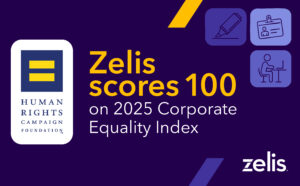As we continue to distance ourselves from the throes of the pandemic that wreaked havoc on our healthcare systems starting in the spring of 2020, it feels as if every year has been “a tough one”, and this year may be no different. Fortunately, health plans and TPAs are embracing technology to optimize old processes.
But technology won’t solve everything without a helping hand.
Payers today must work through many market challenges to create high performing network strategies that are competitive, cost effective, and compliant with the numerous ongoing trends impacting traditional market strategies.
The challenges at hand
Meeting unique member needs
The CMS recently announced thatACA Marketplace enrollment is up 18% from last year. The Biden-Harris Administration has made expanding access to health insurance and lowering healthcare costs a top priority, leading to thenational uninsured rate reaching an all-time lowat the end of 2022.
There are now more health insurance members going into 2023 than ever before. And we all know what that means: more members, more unique member needs.
Understanding the challenges members face allows you to create solutions that support clients and members alike and reduce member abrasion. Of course, that’s often easier said than done. Especially, when cost of care is at the top of the list.
Controlling costs
A survey by Willis Towers Watson revealed thatglobal healthcare costs are projected to hit their highest level in almost 15 yearsdue to rising inflation, increasing healthcare consumption, and continued economic uncertainty. And withover 78% of insurers anticipating higher increasesover the next three years, the survey found little relief in sight.
In today’s world, everything is virtual, including our workforces. And due to such a widely dispersed membership, it is now incredibly difficult for companies to build and manage their own network solutions. Oftentimes, this leads to provider pricing variability, higher out-of-network fees, and unmet member needs.
Hello, member abrasion.
Optimizing savings for claims processes
Optimizing claim processes to recognize savings in a timely manner can be difficult to navigate without the right partner.
Today, the healthcare industry sees about$500B check payments annually. And while 50% of plans manage an in-house EFT offering of some sort, that offering is traditionally geared toward high-dollar-high-volume, contracted in-network providers, leaving many without an electronic payment option and billions of dollars on the table.
EFT and ACH options continue to reduce friction between payers and providers, yet many challenges regarding the claims process remain. And, as always, many are still looking to do more with fewer resources, which comes down to the automation of manual processes and a migration to more modern, holistic systems to drive profitability and ensure their competitive edge.
The wrap up
With digital transformation, ongoing demographic shifts, and a variety of other long and short-term trends, TPAs and health plans are facing significant headwinds when it comes to creating a modern healthcare network. Yet, despite these challenges, there are many ways for TPAs and health plans to create competitive, cost-effective, and compliant networks.
To dive into the holistic Zelis approach to the claims process and get started building out a unique solution for your organization,connect with us.
To learn more about how health plans and TPAs can create a competitive, cost-effective, and compliant modern healthcare network and gain more insight into upcoming 2023 challenges and solutions,listen to our latest podcast with Future Healthcare Today.






